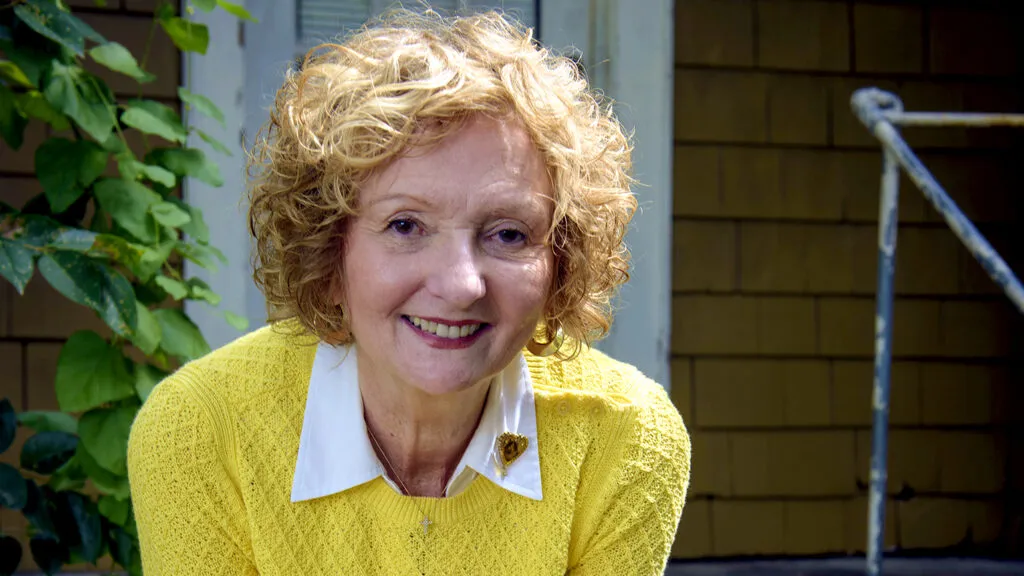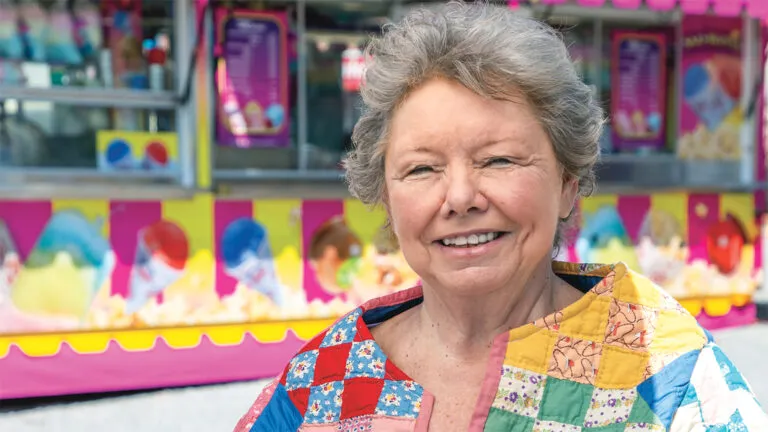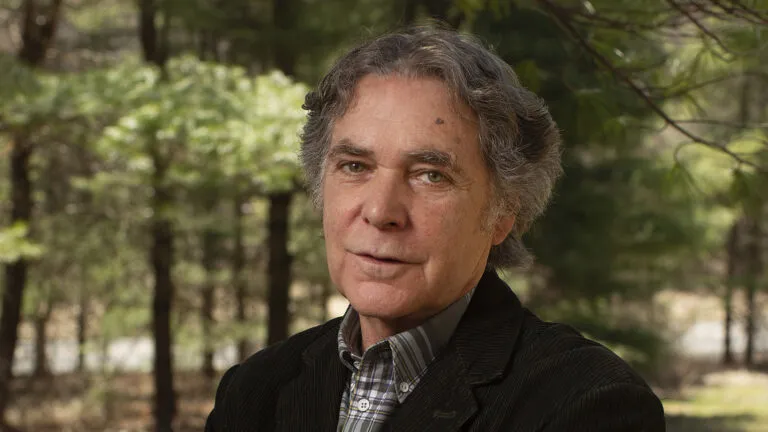I was driving home and thinking over and over, There’s nothing wrong with me. This, despite the doctor saying there was, and then the bombshell he dropped: I would probably have to start giving myself shots.
A little while earlier I had sat across the desk from a pencil-thin rheumatologist wearing a blue button-down shirt. He had already advised me that the first appointment would take an hour and a half. I liked his messy desk; it resembled mine at home. I glanced down at the chart where he pointed. “Your X-rays and blood work indicate that you are in the early stages of rheumatoid arthritis,” he said. “I’m going to prescribe some pills for you, but I expect you’ll decide to give yourself regular injections.”
“I don’t think so,” I said, smiling politely. My thinking was: So I’ve been diagnosed with RA. That doesn’t mean that I actually have it. I took the prescription for pills and made another appointment for three months later. Well, whatever.
I pulled into our driveway at home and felt an increasingly familiar twinge in my hand when I turned off the ignition. Ow! Inside the house, I dropped my keys and purse onto the kitchen counter. My husband, Gene, was full of questions. I put him off. “Here, let me see the pills you’ve got,” he insisted. He sat down and began reading all the detailed paperwork the pharmacy had given me. I hate directions of any kind.
Early the next morning, during my quiet time, I wrote in my prayer journal, “Lord, I am sure this isn’t a big deal. Just don’t let the pain get worse—in fact, take it all away. I trust you to do that. I feel pretty good—most of the time.”
The very next day, Gene nagged, “Marion, I’m sure you should be exercising more now that you’ve been diagnosed. Not long ago, you walked four miles, then two. Now it’s…”
“I’ll start back in the spring. I like early mornings.”
“Come on. I’ll walk with you now. It’s nice outside.”
“Not now,” I snapped, walking away.
Toward the end of the first year, the pain became worse, so intense it exhausted me. My hands and thumbs hurt most of the time. Turning the ignition in the car one day, I yelped in pain. I had to rest both hands in my lap. Finally, blinking back tears, I started the car.
My feet hurt, as did my back. Gene and I curtailed many activities. My energy level drained to zero. So did my creativity, enthusiasm—and joy. Many mornings I crawled to the bathroom in the dark for my medications. I kept them under the sink so I didn’t have to bend down or put weight on my hurting feet.
At a regular three-month checkup, my doctor asked right off, “How’s your pain?” It sounded more like an ambush than a question.
“So-so,” I mumbled.
Making sudden eye contact, he asked, “And are you still crawling to the bathroom?”
I could’ve kicked myself for having admitted that to him in a previous conversation. “Sometimes,” I said.
“Are you walking and getting regular exercise?” he persisted.
“No.”
“Did you read the brochure I gave you about the injections?”
“Not all of it.”
Actually, I hadn’t even opened it. There was some energetic, outdoorsy-looking gal on the cover. She was trudging up Pike’s Peak or some such mountain, making it look like super fun. The picture of health. Obviously, she gave herself the wondrous regular injections. “Don’t these shots cost a lot of money?” I asked, hoping for an out. In fact, I couldn’t imagine injecting myself even if someone paid me to do it.
“I’ve got hundreds of patients who use these shots to treat RA.”
I mentioned the injections to Gene. He beamed. Looked relieved. “Then you must try them,” he said. “You’re spending almost all of your time on the sofa or in bed. I want my walking buddy back, honey.”
Over and over, I prayed and wrote in my prayer journal, “Lord, please take this pain away. I want my life back. I don’t know what to do.” I sat there in my prayer chair, hurting and no longer even trying to fight off depression.
I’m trying to tell you what to do, Marion. Two hot tears plopped down onto my journal. I don’t know if that’s you, Lord, but in case it is, I’ll do what I think you’re saying.
That week, I had another appointment with my rheumatologist. I sat in the small light-green familiar examining room, staring out the window. I’d brought along a book to read because my doctor kept only arthritis magazines in the room. I refused to read them. Maybe I don’t even have.… Maybe I do.
Turning a page in my book, I felt a sharp sneaky pain rip through my thumb. Sometimes I experienced the same pain when I squeezed out toothpaste. Would the shots really be as scary as what was obviously happening to me? Was it the medicine I really feared?
My doctor came in, brisk and efficient. After a routine exam, a few questions, he wrote out a prescription and laid it down on the table. “You need to consider this seriously. And you must start back walking.” Then he handed me another brochure with the excited mountain girl on the cover. “You are about to begin your second year of RA. This medicine can help you and stop further bone damage. But it’s not about the shots. It’s about you. You have to participate in your treatment. You can’t retreat into denial.” He turned and walked out.
The decision was still mine. So was the constant pain. I decided to swing by our pharmacy and see what the prescription would cost. To my amazement, with the help of insurance and Medicare, not too much.
I was weary of thinking about me. My pain. My disability. The condition I’d tried to deny was now defining me. The more I tried to hide from it, the more it was taking. Yet I’d thought denial was the best medicine—that to admit I was sick was to give up. It wasn’t good that I had this disease. But God would help me by sending helpers—Gene, my doctor, even that pesky picture of health on the brochure.
I longed to forget about myself; to laugh, wake up anticipating plans for the day. Start my car. Even vacuum. Oh, I didn’t want to let go of my stubbornness! I wanted God to heal me—without injections.
On a Wednesday at high noon, I sat alone in the kitchen slowly reading for the fifth time the instructions (remember, I hate instructions) and studying the simple diagrams. The actual injection was more like flipping a light switch than giving myself a shot. No needle was ever visible. The discomfort resembled a brief muscle cramp. The brochure said that results could come as soon as the second week or take as long as three months.
But my relief was immediate. At last I’d surrendered. Not to a disease, though. I’d surrendered the stubbornness of my denial that was undermining my health more than the RA itself. Until I could admit I had the disease, I could never get better.
I’m back to walking with Gene. I have a newfound gratitude for pain-free days and for my determined rheumatologist. I’m reminded of people in pain 24/7, and I pray for them.
Today I wrote in my prayer journal, “Father, thank you for speaking through my husband, my doctor and others. I know I’m not always the easiest person to deal with. But isn’t that the way you made me? All I’ve ever known is to be myself, Lord. I ask you now to help me be myself with RA.”
For more inspiring stories, subscribe to Guideposts magazine.





